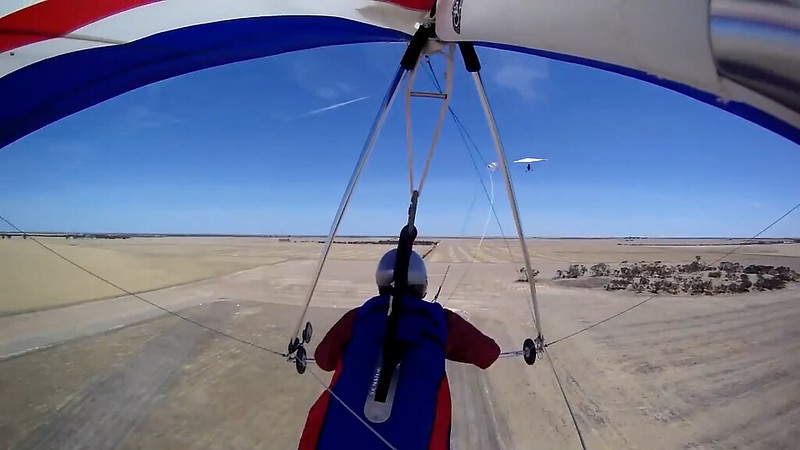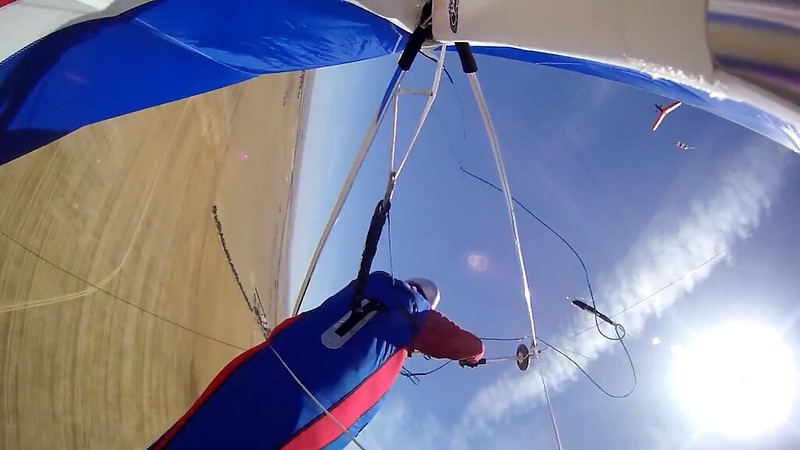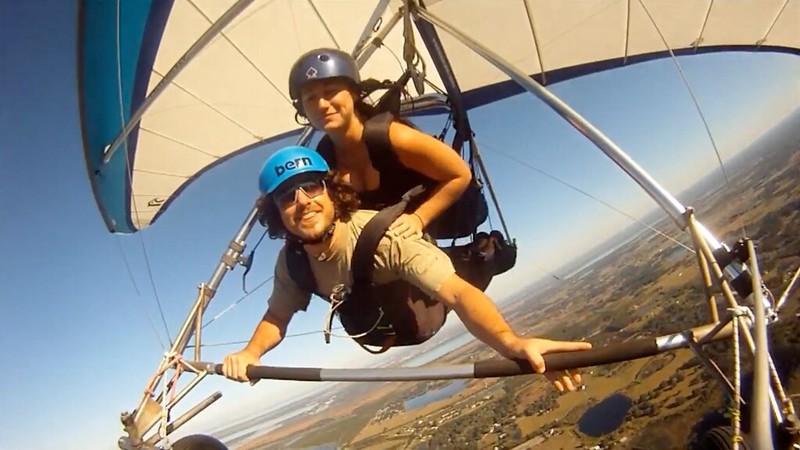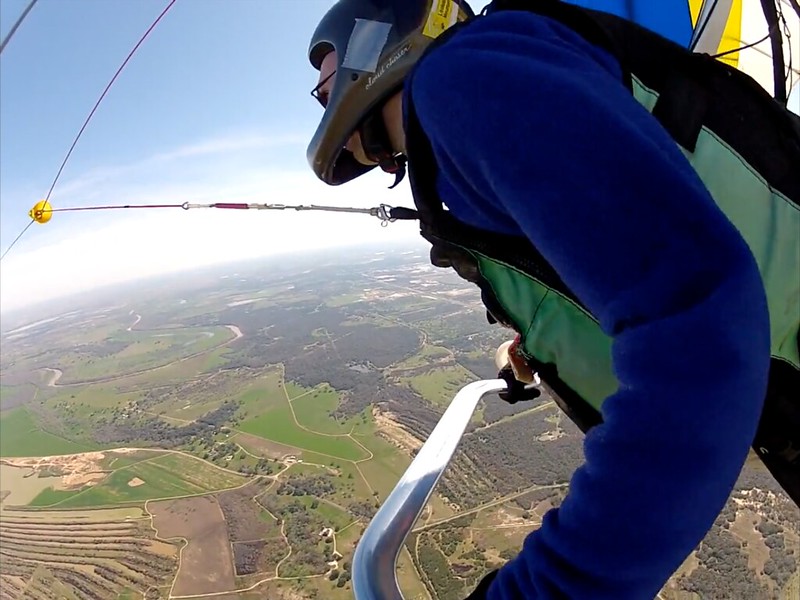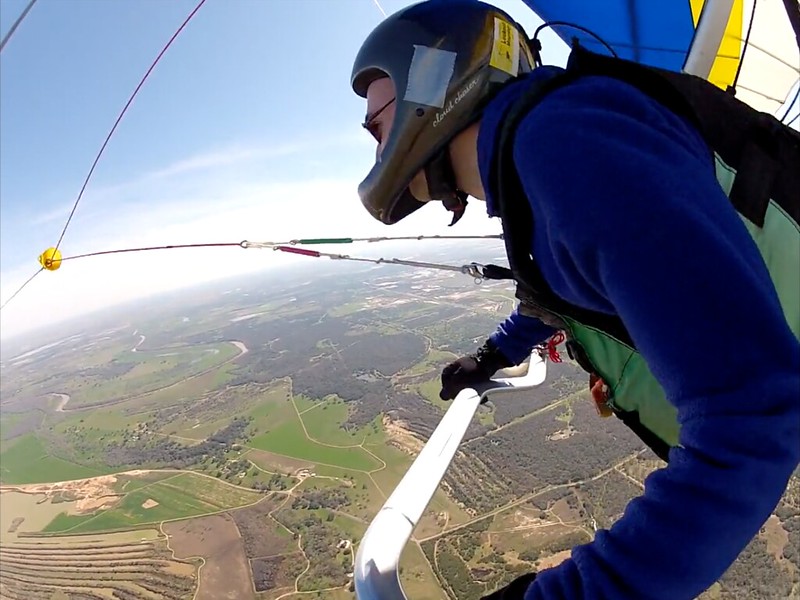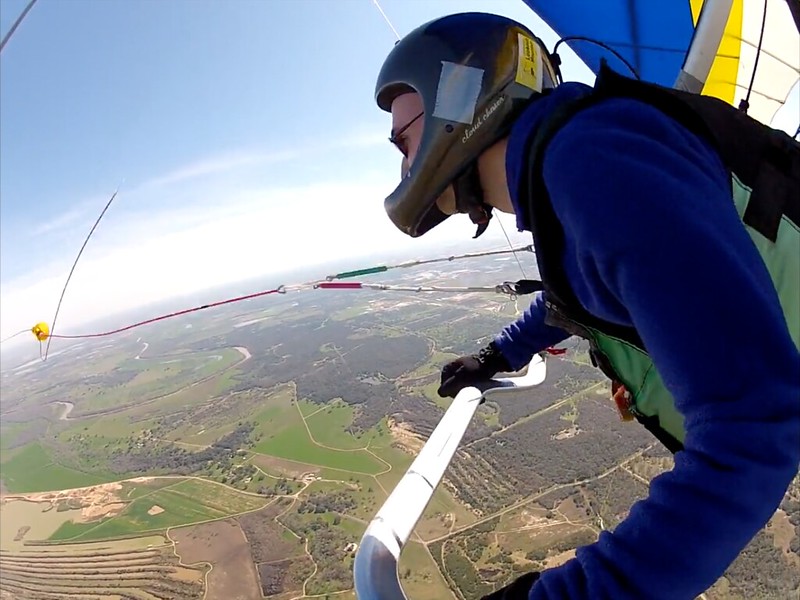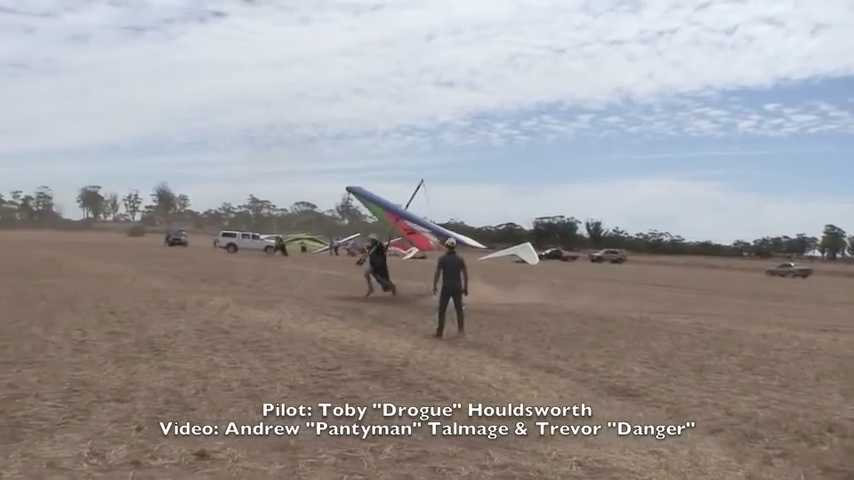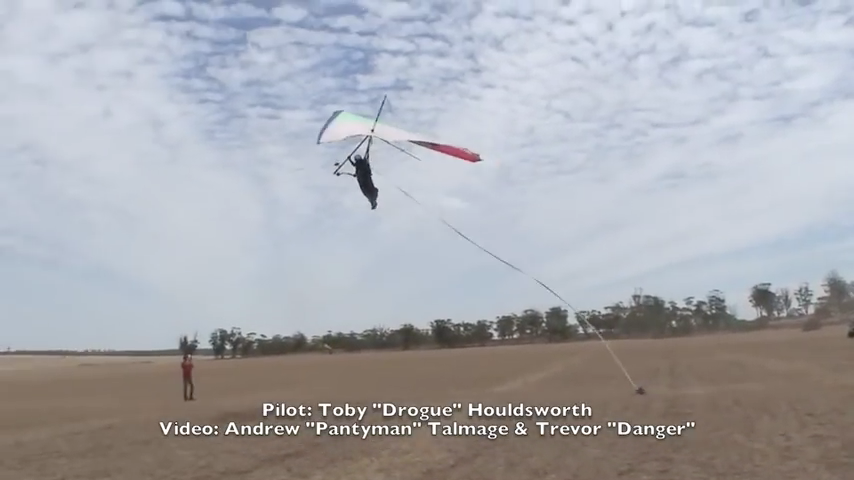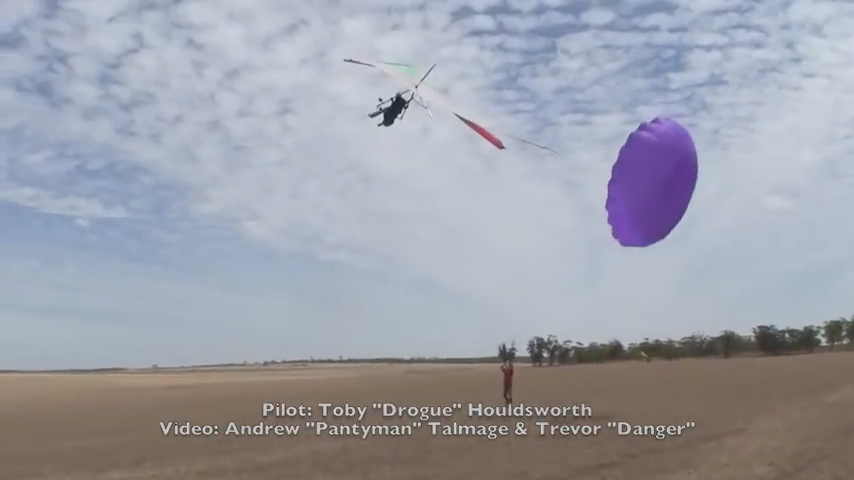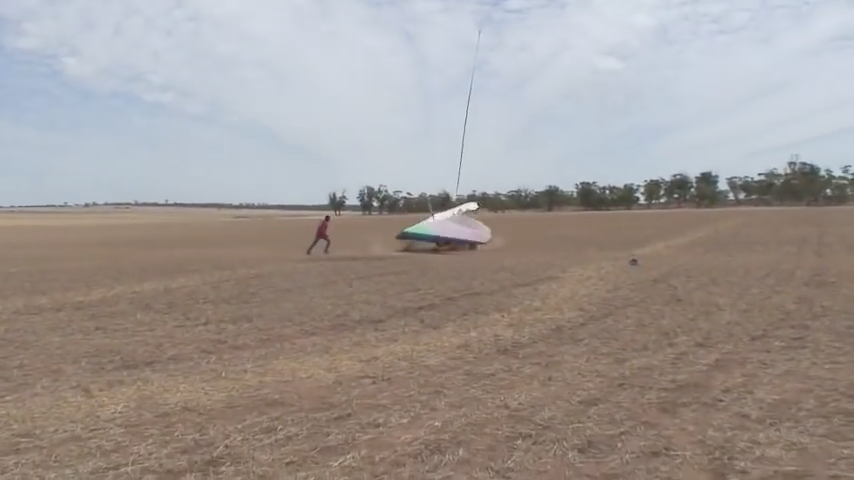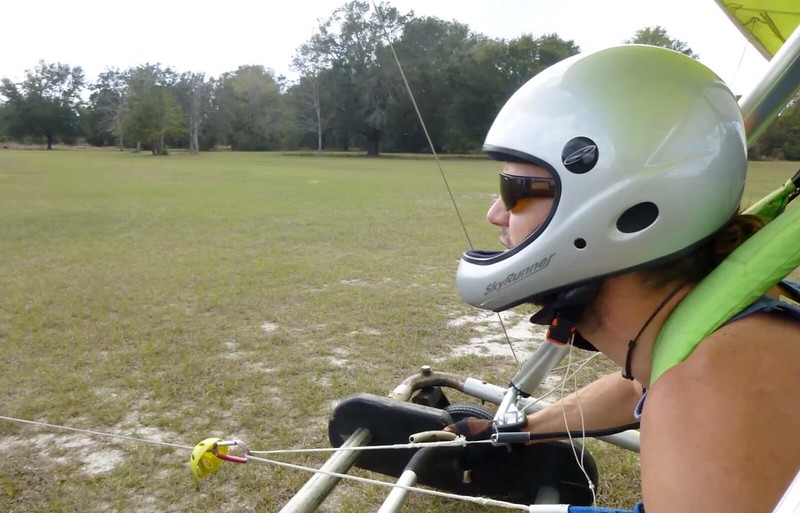http://ozreport.com/forum/viewtopic.php?t=865
Tandem pilot and passenger death
Michael Bradford - 2005/09/15 01:41:35 UTC
Matt Taber's speculative analysis in The Oz Report today describes a fact so simple as to be easily overlooked.
SPECULATIVE!!! That's DISGUSTING!
But let's break away anyway and have a look-see...
http://ozreport.com/9.189
Tandem Towing
Matt Taber - 2005/09/14
I have looked into the past east coast aerotow tandem accidents (as they happened)...
1996/07/25 - Bill Bennett / Mike Del Signore
1998/10/25 - Jamie Alexander / Frank Spears, Jr.
...and the one common denominator or thread in all of the east coast aero tow tandem accidents is...
Towing Aloft - 1998/01
Three recent aerotowing accidents have occurred--one fatal. The common thread in all three was a lockout and the use of a much too heavy weak link. Tandem gliders are much less responsive than smaller gliders and the pilot in command often has a less than ideal position on the control bar. The situation shouldn't be compromised by an over-strength weak link.
A much too heavy weak link?
http://www.hanggliding.org/viewtopic.php?t=25435
Raunchy Day At The Ridge + Release Failure
Diev Hart - 2012/03/06 01:06:39 UTC
Right there (I think) is the main issue...some pilots think they can fix a bad thing and don't want to start over.
Some pilot who thought he could fix a bad thing and didn't want to start over?
http://ozreport.com/forum/viewtopic.php?t=22308
Better mouse trap(release)?
Jim Rooney - 2010/12/16 18:47:05 UTC
Oh, I've heard the "everything we do is an experiment" line before.
The trouble is, it's not.
I've seen experimentation with towing gear more than anything else in HG.
I've not seen many go out and try to build their own sails for example. When someone does, they're very quickly "shown the light" by the community. Example... the guy that was building the PVC glider in California somewhere.
But for some reason, towing gear is exempt from this.
The difference is what we do has been done by thousands of people already. It's been tested... a lot.
What we do is free of the experimentation part.
It's still dangerous, but not at the level of building new gear is. Not even close.
That's what people fail to realize.
It's no small difference. It's a huge chasm.
Notice how I'm not saying to not do it.
Go forth and experiment. That's great... that's how we improve things.
I'm just warning you of that chasm.
A few years ago, I started refusing to tow people with home made gear.
I like the idea of improving gear, but the lack of appreciation for the world they were stepping into didn't sit with me.
For example... flying with the new gear in mid day conditions?
Are you kidding me????
Approach it for what it is... completely untested and very experimental gear which will likely fail in new and unforseen ways as it tries it's damndest to kill you... and then we can talk.
Homemade gear?
...the glider was released from the tow vehicle while low to the ground.
Yeah.
http://www.chgpa.org/forums/viewtopic.php?f=2&t=2467
weak links
Jim Rooney - 2007/08/01 13:47:23 UTC
Whatever's going on back there, I can fix it by giving you the rope.
Right.
Jim Rooney - 2007/08/01 19:49:30 UTC
It's more of this crappy argument that being on tow is somehow safer than being off tow.
Sure.
http://ozreport.com/forum/viewtopic.php?t=31052
Poll on weaklinks
Jim Rooney - 2013/03/05 01:32:20 UTC
Btw, it's nothing to do with you "counting" on the weaklink breaking... Its about me not trusting you to hit the release.
If it were only about what you want, then you could use what you like.
You want the strongest weaklink you can have.
I want you to have the weakest one practical.. I don't care how much it inconveniences you.
I don't trust you as a rule. You Trust you , but I don't and shouldn't.
"WAS RELEASED" by whom or what, Matt?
This may have been the tow vehicle releasing or the weak link breaking or the pilot/student releasing from the tow vehicle.
- Cite ONE SINGLE INCIDENT in which the pilot or student released causing a crash. With the kinda crap pigfuckers like you put them up on the guys on the gliders can't release to PREVENT crashes. They're sure as hell not gonna jump through any dangerous and/or impossible hoops to CAUSE extra crashes.
- Drop the pretentious "tow vehicle" crap. It's a goddam TUG.
They all released low.
WERE released or dumped low.
Witnesses agree that it was at least under 200 feet and in most instances less than 100 feet.
Zack Marzec was at 150. How come you didn't comment on that one? Wasn't worth any of your valuable time?
I do not know any details regarding Arlen's crash...
- Like, for instance, how to spell his name.
- It wasn't just Arlan's crash, motherfucker.
...but if it is not a structural failure and it happened close to the ground involving being released then I feel it is related in concept to the other crashes. Any low to the ground crash that kills a pilot means to me that the glider went in at a steep angle.
Probably to the pilot and student or passenger too.
It is my feeling, and some of the witnessed that I have spoken with from other accidents...
I thought just about all of the witnessed from other accidents were dead.
...clearly support this theory...
http://www.hanggliding.org/viewtopic.php?t=14230
pro tow set-up
Jim Rooney - 2009/11/03 06:16:56 UTC
As for being in a situation where you can't or don't want to let go, Ryan's got the right idea. They're called "weak" links for a reason. Overload that puppy and you bet your ass it's going to break.
You can tell me till you're blue in the face about situations where it theoretically won't let go or you can drone on and on about how "weaklinks only protect the glider" (which is BS btw)... and I can tell ya... I could give a crap, cuz just pitch out abruptly and that little piece of string doesn't have a chance in hell. Take your theory and shove it... I'm saving my a$$.
THEORY.

Shove your theory up your ass.
...that the towed aircraft...
The "TOWED AIRCRAFT"? Would that be the GLIDER you're talking about?
...was lower than it should have been...
Why do you think, Matt?
...and the pilot was trying to get back into position.
Oh. The GLIDER got LOWER THAN IT SHOULD HAVE BEEN but now he's suddenly realized that he should've been staying level with it. So now he's TRYING TO GET BACK INTO POSITION. So what's the fuckin' douchebag on the "TOW VEHICLE" been doing all this time, Matt? Never mind, I forgot that the fuckin' douchebags on the tow vehicles can do no wrong. Anything that happens to the glider is its own stupid goddam fault.
The glider was getting low on tow and the pilot was pushing out...
...and the fuckin' douchebag on the tug was just continuing to climb out...
...and then the weak link broke...
What weak link?
- Front or back end?
- What's its strength?
- Is it legal under FAA aerotowing regulations?
- If it's legal where in the range does it fall? Low? Mid? High?
- What's its purpose?
...or the rope was released by the tow vehicle or on the glider end.
Sleazy lying son of a bitch.
This caused an immediate loss of control with the glider impacting the ground at a steep angle -- usually on one wing or another. This low release with a high angle of attack causes in effect a whip stall.
HANG GLIDING FOR BEGINNER PILOTS
By Peter Cheney
Published by Matt Taber
Official Flight Training Manual of the U. S. Hang Gliding Association
Lockouts can be prevented by using good technique, light tow pressures, and appropriately-sized weak links--if you get too far off heading, and a lockout begins to develop, a proper weak link will break and release you from tow.
While low to the tow vehicle you can push out all the way and still not climb to position -- you are being towed in a stalled condition.
What's the fuckin' douchebag on the tug doing?
The procedure should be to release if you can not get in position by letting the bar out or using a quick momentary push out then back to trim.
The procedure is to stuff the fuckin' bar and stand the fuckin' tug on its tail to restore your safety margin and remind him that he's got a glider back there behind him. And if you stall him and kill him in the process I'm totally cool with that. We've got some major scores to settle here.
Regardless of what was going on or when --- in all the above mentioned aero tow tandem accidents the glider was released from tow at low altitude and immediately crashed killing one or both pilots on board.
And, as usual, leaving the fuckin' douchebag on the tug unscathed and free to slink away from the discussion and resume his career like nothing happened.
I feel strongly that the cause of crash in the cases that I looked at...
Tell us about some of the cases...
http://www.hanggliding.org/viewtopic.php?t=20756
How is Zach Etheridge doing?
Bob Flynn - 2011/02/04 11:26:34 UTC
Lookout keeps this kind of stuff under their hat. You never hear of accidents there. But every time I go there, I hear about quite a few. Blown launches, tree landings, etc.
http://www.hanggliding.org/viewtopic.php?t=18777
Accident - Broken Jaw - Full Face HG Helmet
Keith Skiles - 2010/08/28 05:20:01 UTC
Last year, at LMFP I saw an incident in aerotow that resulted in a very significant impact with the ground on the chest and face. Resulted in a jaw broken in several places and IIRC some tears in the shoulder.
http://groups.yahoo.com/group/TTTFlymail/message/11545
Cart stuck incidents
Keith Skiles - 2011/06/02 19:50:13 UTC
I witnessed the one at Lookout. It was pretty ugly. Low angle of attack, too much speed and flew off the cart like a rocket until the weak link broke, she stalled and it turned back towards the ground.
http://ozreport.com/forum/viewtopic.php?t=24846
Is this a joke ?
Jim Rooney - 2011/09/02 19:41:27 UTC
Yes, go read that incident report.
Please note that the weaklink *saved* her ass. She still piled into the earth despite the weaklink helping her... for the same reason it had to help... lack of towing ability. She sat on the cart, like so many people insist on doing, and took to the air at Mach 5.
That never goes well.
Yet people insist on doing it.
Davis Straub - 2011/09/03 01:39:55 UTC
I think that I know the one that is being referred to.
The problem was an inexperienced female student put on a cart that had the keel cradle way too high, so she was pinned to the cart. The folks working at Lookout who helped her were incompetent.
...you didn't bother to look at.
...is most probably a result of the pilot pushing out to maintain or get into position and then the line was released, or the weak link broke.
Or the tow mast breakaway snapped. Or the Birrenator kicked in.
This low release with a high angle of attack causes in effect a whip stall.
It doesn't ACTUALLY cause a whipstall. It just causes IN EFFECT a whipstall. So ya still got some wiggle room.
I feel that this is a sure killer...
What if I feel differently, Matt? Won't I be a lot better off than you?
...and not as obvious as it could or should be...
Seeing as how sleazy pigfuckers like you have been lying your asses off to all your students for decades.
...furthermore many tandem professionals do not share or buy into my theory.
- Oh. This is *YOUR* THEORY. Instantaneous full catastrophic power failure causes an abrupt and severe increase in angle of attack. May result in a stall. You thought of that all by yourself. Guess we should call Southwest Airlines and let them know that they really better start watching it on engine maintenance.
- Fuck tandem professionals. They're all DREGS.
For instance, Greg DeWolfe...
DeWolf.
...had a tandem crash while teaching an aerotow tandem clinic at Lookout.
Obviously the most valuable lesson of the clinic.
His weak link broke on take off...
Bullshit. A weak link increases the safety of the towing operation. PERIOD. It's physically impossible to crash a glider after a weak link break on takeoff. The worst that can happen is an inconvenience.
...and he explained that he felt that he could let the bar float in to maintain control and affect a proper landing...
Affect it how? By rotating upright and throwing away what little control authority he had as things were so he could properly land on his feet?
...we debated the issue and assured him that he would have to aggressively pull in to keep or get the glider flying depending on how high the nose angle was allowed to go.
How can he aggressively pull in AND do a proper landing?
This was a minor crash that took out the tandem landing gear and the control frame -- no injuries.
Told ya so. Just an inconvenience.
I still do not know if he agrees that he can not push out in a tandem situation and recover if the weak link breaks -- the rope breaks or the engine quits.
I certainly hope not. The more of these asshole we kill the better off the sport will be.
I preach the dangers of pushing out -- getting the nose up (angle of attack) or allowing the nose angle to get too high -- while flying tandem while close to the ground.
But you solo guys... Knock yourselves out.
I feel that this is a sure killer and that the crash can not be avoided if you lose the tow vehicle for any reason.
Just your opinion. What makes you think yours is any better than anyone else's?
I feel strongly that the pilot must not allow the angle of attack to get too high and the pilot can not afford to give up his energy close to the ground.
Opinions, strong feelings...

I feel that the safe procedure is to take off and maintain position 20 feet above the tail of the plane awaiting the plane to take off. Then let the bar out as necessary (not push out) to stay in position while under 200 to 300 feet...
Yeah, I'll bet Bill Bennett, Mike Del Signore, Jamie Alexander, Frank Spears, Arlan Birkett, Jeremiah Thompson didn't know that. Probably just took off and enjoyed the ground skimming for a while, eventually looked up, noticed that the tug was doing what it was supposed to be, started pushing out to make up for lost time...
...remember, your glider is trimmed with the tow attach point at around 28 to 30mph.
Yeah?
14-03704
http://farm6.staticflickr.com/5523/14571090561_4086ee6832_o.png
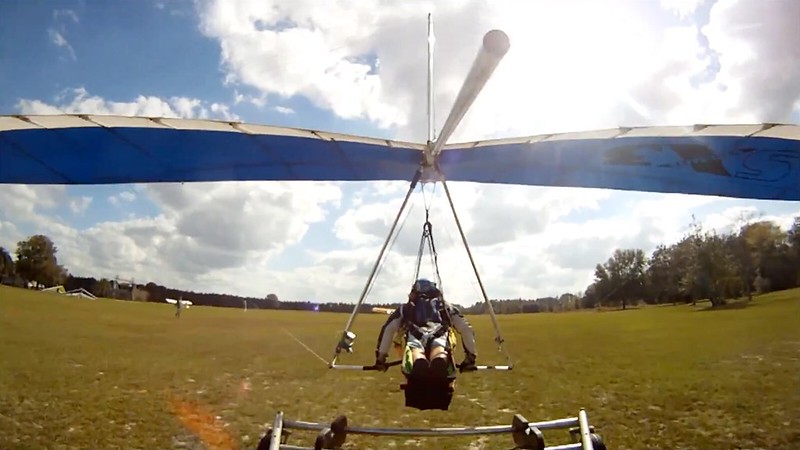
06-03114
http://farm4.staticflickr.com/3728/9655895292_f4f808fb0e_o.png
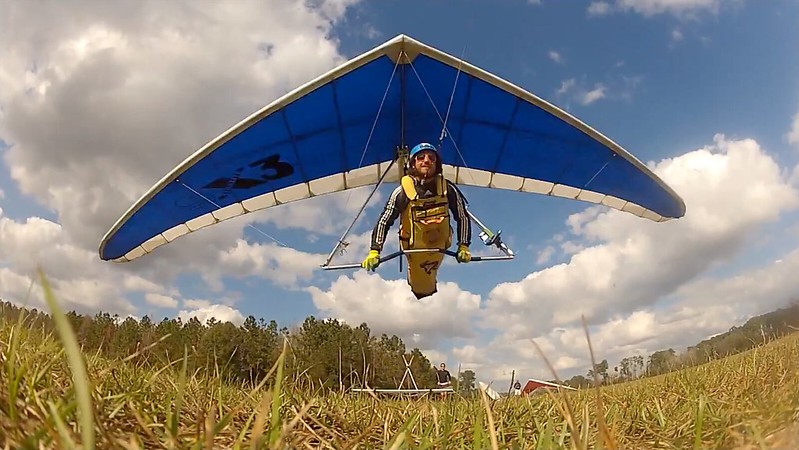
03-02421
http://farm8.staticflickr.com/7200/14097626583_03972773c6_o.png
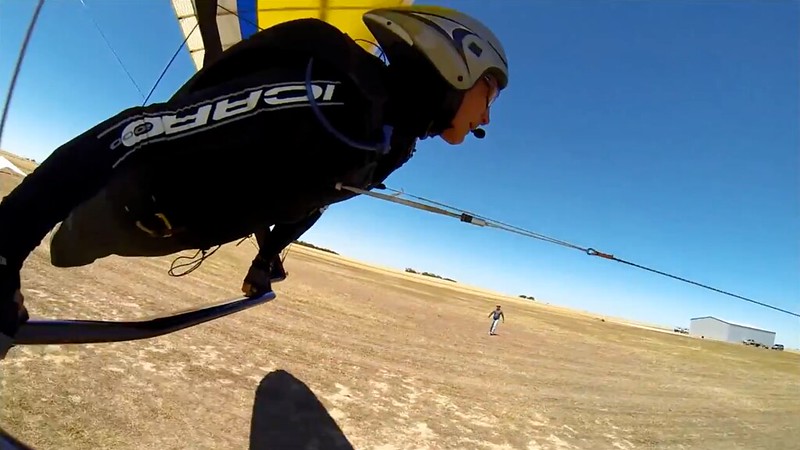
The tug flies faster than that close to the ground. Above 300 feet it is OK to push out a bit -- not a lot -- as necessary to stay in position. You should not continue to hold the bar out.
Stuff the fuckin' bar. Send the fuckin' message.
If you get low and the plane does not speed up to bring you back in position...
Then you know beyond any doubt - if you had any to begin with - that your life has been put into the hands of an incompetent asshole.
...without pushing out then you should release and re-do the tow.
And don't bother pulling in first. We don't wanna go TOO nuts on this safety/airspeed thing.
I have preached this method to many, however there are instructors that still teach that you can not stall while being towed.
http://www.chgpa.org/forums/viewtopic.php?f=2&t=2467
weak links
Marc Fink - 2007/07/23 11:14:35 UTC
Exactly. Tad says we go to the upper end, we say it's fine where it is. Tad says "inadvertent" breaks are malfunctions which will kill you and inconvenience him with waiting an extra 3 minutes on the flight line while he's eager to go after that huge xc flight or Manfred's world distance record; we say it's the weak link doing what it's supposed to do. (it's a wonder he tolerates tandems on the same day he's out).
Why are we "hyperventilating?"
Because Tad has:
1. Continued to attack us and call us names just because we don't agree with everything he says.
2. He has also insulted the integrity of several professional instructors and implied that they are deliberately putting students at risks.
3. He has donned the hat of part-time NTSB crash investigator and used anectodal accounts of spectacular accidents to bolster his arguments.
They have politely listened to my fears and I question whether what I am saying is accepted. I do not believe that we have a consensus in the industry and it is difficult to safely prove what will happen.
Then shut the fuckin' industry down until all the motherfuckers in it can get on the same page with reality.
By the way, Matt... Who are you preaching to? Obviously not any of the douchebags at OTHER flight parks. They're obviously your own tug and tandem drivers. So why are you hiring them / aren't you firing them? Maybe 'cause with what you pay you've gotta take whatever dregs you can get?
I maintain that if you go to altitude and then get a bit low on the plane...
The only way YOU can get low on the plane is to pull in. And if that's how you got there you're probably good no matter what increases the safety of the towing operation on you or who makes a good decision in the interest of your safety. But NOBODY DOES THAT.
The ONLY REASON anybody's ever "LOW ON THE PLANE" (discounting normal, unavoidable, short duration thermal stuff) is 'cause the fuckin' douchebag on the plane has outclimbed him. And we all instinctively ease the bar out 'cause we're trying to make things easy on the fuckin' douchebag on the plane and we're assuming that he'll wake up and start doing his job in a second or two.
Don't EVER make that mistake kids. Gotta do the opposite of what your considerate instincts are telling you to.
...have the plane fly slowly (about 30mph indicated) and then push out to get in position -- while doing this release -- your feat will hit the keel as the glider violently whip stalls to recover.
Thanks Matt. I don't hafta actually DO that to UNDERSTAND that. Kinda like I don't need to experience landing with a thirty mile per hour tailwind to know that that's a bad idea.
At best you will do unusual attitude recovery practice. You will use up a lot of altitude. Doing this once is not a scientific test and a highly loaded tandem glider is the last and worst choice for performing whip stalls.
Depends a lot on who's on the glider.
I have spent a lot of time with our tandem instructors explaining how serious this can be and making sure that we are in agreement that they will never push out while low to the ground and then only push out moderately and for a moment at altitude.
How does some total fucking moron who needs to have this explained to him manage to get rated as a tandem instructor in the first place?
Like I said earlier -- I do not know what happened, if, however there is a preventable reason why we are seeing this kind of accident and if these accidents are related as to how they occur then we should discuss the push out and how much issue and come up with a consensus.
How 'bout we come up with some consensuses on:
- weak links
- Dragonfly tow mast:
-- breakaways
-- breakaway protectors
- thanking our drivers for making good decisions in the interest of our safety
- releases:
-- within easy reach
-- not warranted as suitable for towing anything
while we're at it?
Motherfucker.
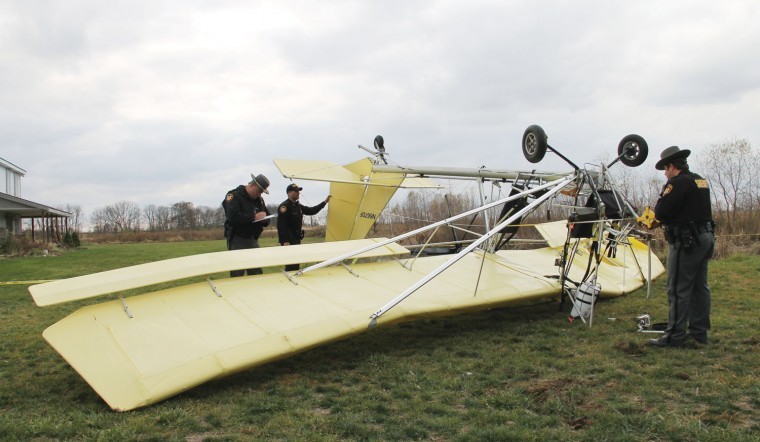
 I reach to hit the release and accidently push the release on the outside of the down tube "shit" at this point i was at a bank angle of about 75 dg still high up on the left (thank god for secondary). When i pulled the secondary the glider was at 90dg , i kept the bar pulled in and followed through the turn loosing 350 ft almost instantly.. (glad i had the altitude).
I reach to hit the release and accidently push the release on the outside of the down tube "shit" at this point i was at a bank angle of about 75 dg still high up on the left (thank god for secondary). When i pulled the secondary the glider was at 90dg , i kept the bar pulled in and followed through the turn loosing 350 ft almost instantly.. (glad i had the altitude).